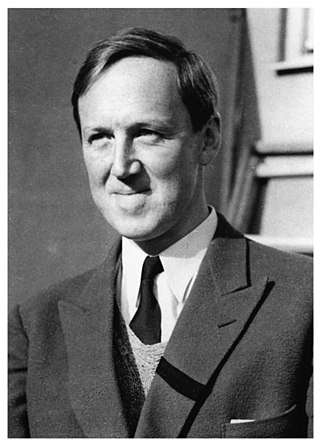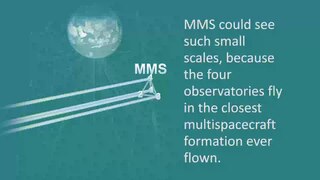Related Research Articles

A corona is the outermost layer of a star's atmosphere. It consists of plasma.

The solar wind is a stream of charged particles released from the upper atmosphere of the Sun, called the corona. This plasma mostly consists of electrons, protons and alpha particles with kinetic energy between 0.5 and 10 keV. The composition of the solar wind plasma also includes a mixture of materials found in the solar plasma: trace amounts of heavy ions and atomic nuclei of elements such as C, N, O, Ne, Mg, Si, S, and Fe. There are also rarer traces of some other nuclei and isotopes such as P, Ti, Cr, 54Fe and 56Fe, and 58Ni, 60Ni, and 62Ni. Superimposed with the solar-wind plasma is the interplanetary magnetic field. The solar wind varies in density, temperature and speed over time and over solar latitude and longitude. Its particles can escape the Sun's gravity because of their high energy resulting from the high temperature of the corona, which in turn is a result of the coronal magnetic field. The boundary separating the corona from the solar wind is called the Alfvén surface.

Magnetohydrodynamics is a model of electrically conducting fluids that treats all interpenetrating particle species together as a single continuous medium. It is primarily concerned with the low-frequency, large-scale, magnetic behavior in plasmas and liquid metals and has applications in numerous fields including geophysics, astrophysics, and engineering.

Hannes Olof Gösta Alfvén was a Swedish electrical engineer, plasma physicist and winner of the 1970 Nobel Prize in Physics for his work on magnetohydrodynamics (MHD). He described the class of MHD waves now known as Alfvén waves. He was originally trained as an electrical power engineer and later moved to research and teaching in the fields of plasma physics and electrical engineering. Alfvén made many contributions to plasma physics, including theories describing the behavior of aurorae, the Van Allen radiation belts, the effect of magnetic storms on the Earth's magnetic field, the terrestrial magnetosphere, and the dynamics of plasmas in the Milky Way galaxy.

A coronal mass ejection (CME) is a significant ejection of magnetic field and accompanying plasma mass from the Sun's corona into the heliosphere. CMEs are often associated with solar flares and other forms of solar activity, but a broadly accepted theoretical understanding of these relationships has not been established.

In plasma physics, an Alfvén wave, named after Hannes Alfvén, is a type of plasma wave in which ions oscillate in response to a restoring force provided by an effective tension on the magnetic field lines.

Magnetic reconnection is a physical process occurring in electrically conducting plasmas, in which the magnetic topology is rearranged and magnetic energy is converted to kinetic energy, thermal energy, and particle acceleration. Magnetic reconnection involves plasma flows at a substantial fraction of the Alfvén wave speed, which is the fundamental speed for mechanical information flow in a magnetized plasma.

The interplanetary medium (IPM) or interplanetary space consists of the mass and energy which fills the Solar System, and through which all the larger Solar System bodies, such as planets, dwarf planets, asteroids, and comets, move. The IPM stops at the heliopause, outside of which the interstellar medium begins. Before 1950, interplanetary space was widely considered to either be an empty vacuum, or consisting of "aether".

Eugene Newman Parker was an American solar and plasma physicist. In the 1950s he proposed the existence of the solar wind and that the magnetic field in the outer Solar System would be in the shape of a Parker spiral, predictions that were later confirmed by spacecraft measurements. In 1987, Parker proposed the existence of nanoflares, a leading candidate to explain the coronal heating problem.
In magnetohydrodynamics (MHD), shocks and discontinuities are transition layers where properties of a plasma change from one equilibrium state to another. The relation between the plasma properties on both sides of a shock or a discontinuity can be obtained from the conservative form of the MHD equations, assuming conservation of mass, momentum, energy and of .
Coronal seismology is a technique of studying the plasma of the Sun's corona with the use of magnetohydrodynamic (MHD) waves and oscillations. Magnetohydrodynamics studies the dynamics of electrically conducting fluids - in this case the fluid is the coronal plasma. Observed properties of the waves (e.g. period, wavelength, amplitude, temporal and spatial signatures, characteristic scenarios of the wave evolution, combined with a theoretical modelling of the wave phenomena, may reflect physical parameters of the corona which are not accessible in situ, such as the coronal magnetic field strength and Alfvén velocity and coronal dissipative coefficients. Originally, the method of MHD coronal seismology was suggested by Y. Uchida in 1970 for propagating waves, and B. Roberts et al. in 1984 for standing waves, but was not practically applied until the late 90s due to a lack of necessary observational resolution. Philosophically, coronal seismology is similar to the Earth's seismology, helioseismology, and MHD spectroscopy of laboratory plasma devices. In all these approaches, waves of various kind are used to probe a medium.

Adolfo Figueroa-Viñas is the first Puerto Rican astrophysicist at the National Aeronautics and Space Administration (NASA) and is an expert in solar and space plasma physics at the Heliophysics Science Division. As a staff scientist his research interests include studying plasma kinetic physics and magnetohydrodynamics of the solar wind, heliosphere, shock waves, MHD and kinetic simulation of plasma instabilities, and turbulent processes associated with space, solar and astrophysical plasmas.

A nanoflare is a very small episodic heating event which happens in the corona, the external atmosphere of the Sun.
Jiong Qiu (邱炯) is a Chinese-born American astrophysicist who won the Karen Harvey Prize for her work in solar flares.
Andrew Michael Soward is a British fluid dynamicist. He is an emeritus professor at the Department of Mathematics of the University of Exeter.
Moira Mary Jardine is a British astrophysicist with an interest in young stars, particularly the structure of their magnetic fields and coronae, and the mechanisms by which they interact with their disks and planets. She was promoted to a Personal Chair in 2012, making her the first female professor of Physics at the University of St Andrews.
Philippa K. Browning is a Professor of Astrophysics in the Jodrell Bank Centre for Astrophysics at the University of Manchester. She specialises in the mathematical modelling of fusion plasmas.
Clare Elizabeth Parnell is a British astrophysicist and applied mathematician who studies the mathematics of the sun and of magnetic fields, including the Solar corona and the sun's magnetic carpet, magnetic reconnection in plasma, and the null points of magnetic fields. She is a professor of mathematics at the University of St Andrews, and the former head of the Division of Applied Mathematics at St Andrews.
William Henry Matthaeus is an American astrophysicist and plasma physicist. He is known for his research on turbulence in magnetohydrodynamics (MHD) and astrophysical plasmas, for which he was awarded the 2019 James Clerk Maxwell Prize for Plasma Physics.

James Wynne "Jim" Dungey (1923–2015) was a British space scientist who was pivotal in establishing the field of space weather and made significant contributions to the fundamental understanding of plasma physics.
References
- ↑ Cargill, P.; Parnell, C.; Browning, P.; De Moortel, I.; Hood, A. (2010). "Magnetic reconnection in the solar atmosphere: From proposal to paradigm". Astronomy & Geophysics. 51 (3): 3.31. Bibcode:2010A&G....51c..31C. doi: 10.1111/j.1468-4004.2010.51331.x .
- ↑ Browning, Philippa K. (1984). Inhomogeneous magnetic fields in the solar atmosphere. st-andrews.ac.uk (PhD thesis). University of St Andrews. hdl:10023/3830. OCLC 890152927. EThOS uk.bl.ethos.349463.

- ↑ Priest, E. R. (2014). "A Life of Fun Playing with Solar Magnetic Fields (Special Historical Review)". Solar Physics. 289 (10): 3579–3615. arXiv: 1405.3481 . Bibcode:2014SoPh..289.3579P. doi:10.1007/s11207-014-0554-2. ISSN 0038-0938. S2CID 119269151.
- ↑ Faraday Institute Biography Archived 30 December 2006 at the Wayback Machine
- ↑ [European Physical Society webpage] Archived 29 April 2020 at eps.org (Error: unknown archive URL)
- ↑ "Eric Priest - Royal Society". royalsociety.org.
- ↑ World’s Leading Astronomers And Geophysicists Honoured By Royal Astronomical Society 10 January 2009
- ↑ "2009 Payne-Gaposchkin medal and prize". Institute of Physics. Retrieved 26 December 2019.
- ↑ "Gruppe 2: Fysikkfag (herunder astronomi, fysikk og geofysikk)" (in Norwegian). Norwegian Academy of Science and Letters. Archived from the original on 27 September 2011. Retrieved 7 October 2010.
- ↑ "Laureation address – Professor Eric Priest FRSE FRS". University of St Andrews . Retrieved 30 November 2013.